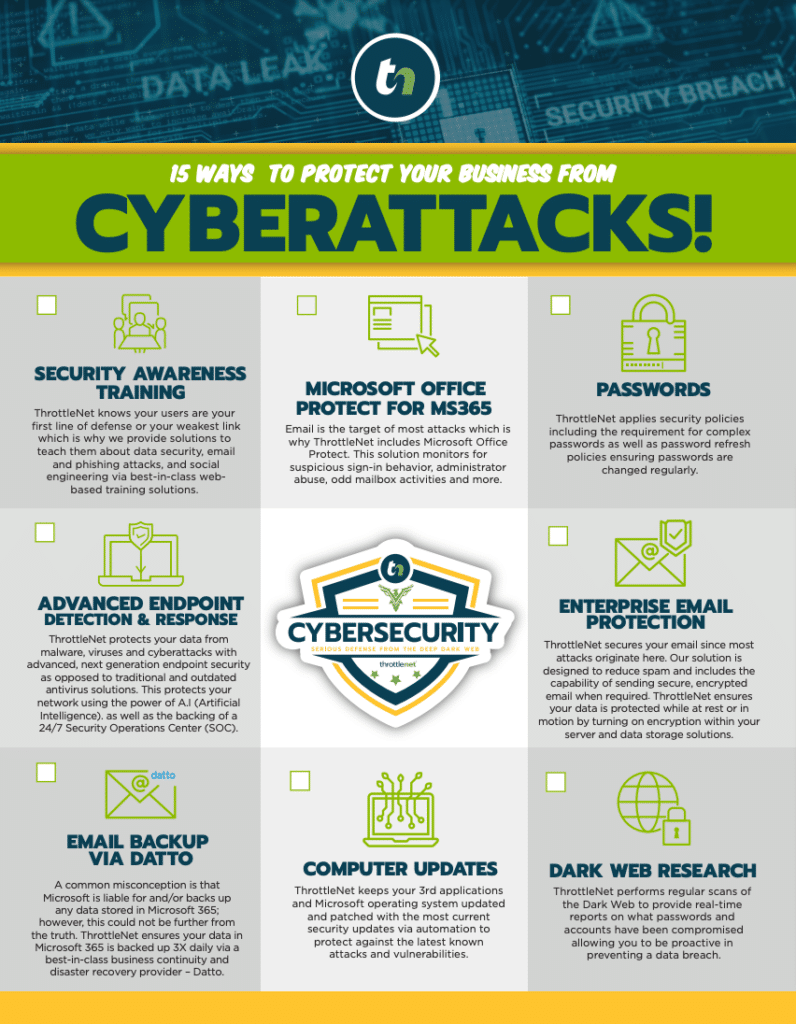
The Benefits of a Virtual CIO for Small Businesses
Not every small business can afford to hire a full-time Chief Information Officer (CIO). Yet technology decisions—about cloud infrastructure, cybersecurity, hardware refreshes, and business software—are too important to leave to chance.
That’s where the benefits of a Virtual CIO (vCIO) come in. Todd Budde, Director of Managed Services at ThrottleNet and leader of the company’s vCIO team, appeared on TNtv to explain how businesses can gain the same strategic IT leadership as a Fortune 500 company—without adding a six-figure executive to their payroll.
He emphasized that a Virtual CIO helps small and mid-sized businesses bridge the gap between day-to-day IT support and long-term technology strategy. The result? Smarter decisions, lower costs, and stronger security.
Why Small Businesses Struggle Without a CIO
In many small businesses, IT management falls on one or two overworked employees who juggle help desk tickets, server issues, and software updates—all while trying to “plan” for the future.
Budde noted that this model isn’t sustainable.
“You can’t expect one person to manage daily support, security, and strategic planning,” he said. “That’s not an IT strategy—it’s survival mode.”
Without an experienced IT strategist, companies often:
- Replace hardware reactively rather than proactively
- Miss opportunities to reduce costs through technology optimization
- Fall behind on cybersecurity best practices
- Lack an actionable roadmap for growth
The benefits of a Virtual CIO become clear when businesses realize they can have expert-level leadership without the overhead of hiring a full-time executive.
What Is a Virtual CIO?
Before diving into the benefits of a Virtual CIO, it’s important to understand what a vCIO actually does.
A Virtual CIO (vCIO) is an outsourced technology executive who works with your company’s leadership to plan, budget, and guide IT strategy. Instead of being on staff full-time, a Virtual CIO partners with your business through a Managed IT Services provider—like ThrottleNet—to act as your technology advisor.
The role of a vCIO includes:
- Understanding your business processes and goals
- Assessing your existing IT infrastructure
- Developing a 1–3 year technology roadmap
- Recommending upgrades, cloud strategies, and cybersecurity improvements
- Helping you budget and plan for predictable technology expenses
In short, a Virtual CIO provides the leadership and foresight of a full-time CIO—at a fraction of the cost.
1. Outside Evaluation from an Expert Perspective
One of the most powerful benefits of a Virtual CIO is gaining an unbiased, external perspective on your technology environment.
A vCIO begins by conducting a network assessment to analyze your systems, uncover risks, and identify inefficiencies. This often includes:
- Evaluating cybersecurity measures
- Reviewing backup and disaster recovery procedures
- Assessing cloud readiness
- Identifying outdated hardware or software
Budde explained that these assessments frequently reveal issues internal teams simply don’t have time to notice. “A Virtual CIO can spot gaps in your IT strategy that might otherwise go unchecked for years,” he said.
This outside perspective not only strengthens your infrastructure but also provides data-driven recommendations to help you prioritize technology investments.
2. Strategic Planning and Technological Foresight
Another key benefit of a Virtual CIO is long-term planning.
While your internal IT staff handles immediate support tickets and maintenance, the vCIO looks ahead—developing a technology roadmap that supports your future growth.
Budde described this as “moving from reactive support to proactive strategy.”
A Virtual CIO helps your business:
- Plan hardware refresh cycles and software upgrades
- Identify emerging technologies that can improve efficiency
- Build timelines for cloud migrations or cybersecurity enhancements
- Anticipate scalability needs before expansion occurs
For example, your vCIO might advise upgrading only certain machines that run specialized software rather than replacing all workstations at once. That kind of foresight saves money while keeping operations current.
The result is a technology plan that evolves alongside your business, not one that constantly plays catch-up.
3. Improved Efficiency and Productivity
When systems are outdated or poorly managed, employees lose hours each week to slow computers, software conflicts, and downtime.
A Virtual CIO identifies these inefficiencies and recommends solutions that streamline workflows. They analyze how departments use technology, eliminate redundancies, and standardize tools for collaboration—such as implementing secure cloud platforms or unified communication systems.
By aligning technology with daily operations, companies see measurable gains in productivity.
This is one of the most immediate benefits of Virtual CIO services—your staff spends less time fighting with technology and more time driving results.
4. Enhanced Security and Risk Management
Cyber threats evolve daily, and small businesses are frequent targets. Yet many companies rely on outdated firewalls, weak password policies, or incomplete backups.
A Virtual CIO strengthens your security posture by:
- Establishing multi-layered defense systems
- Implementing data encryption and endpoint protection
- Ensuring compliance with HIPAA, PCI DSS, or other industry regulations
- Creating disaster recovery and business continuity plans
With constant access to a team of IT security experts, businesses gain peace of mind knowing their data, clients, and reputation are protected.
As Budde explains, “Security isn’t a one-time fix—it’s a continuous strategy. A Virtual CIO ensures your defenses evolve faster than the threats.”
5. Cost Savings and Predictable Budgeting
Hiring a full-time CIO can easily exceed six figures annually. Virtual CIO services deliver comparable strategic leadership at a fraction of the cost—often bundled with managed IT support.
Even better, a vCIO helps you plan predictable budgets by mapping out technology spending over multiple years.
No more surprise expenses when servers fail or software expires—all upgrades are planned and scheduled.
In addition, the benefits of a Virtual CIO often include cost savings from identifying wasteful subscriptions, unused licenses, or redundant systems. Over time, those savings can more than pay for the service itself.
6. In-House Value Without the In-House Expense
Perhaps the most appealing benefit of a Virtual CIO is that you get the same strategic value as an in-house executive—without the HR costs, recruitment challenges, or management overhead.
Your vCIO acts as an extension of your leadership team. They attend quarterly meetings, prepare technology performance reports, and collaborate with management to align IT with overall business goals.
It’s the best of both worlds:
✅ Executive-level expertise
✅ Proactive strategy and reporting
✅ Cost-effective partnership
With ThrottleNet’s vCIO program, you don’t just get one person—you get a team. Each Virtual CIO is backed by cybersecurity specialists, engineers, and help desk professionals who execute the strategy they design.
Unlock the Benefits of a Virtual CIO with ThrottleNet
Technology should drive your business forward—not hold it back. The benefits of a Virtual CIO go far beyond troubleshooting—they provide the strategy, structure, and scalability your business needs to grow confidently in a fast-changing digital landscape.
Whether you want to reduce downtime, improve cybersecurity, or plan for the next five years, ThrottleNet’s Virtual CIO services deliver the insight and leadership your team needs.
Contact ThrottleNet today at 866-730-3136 or visit www.throttlenet.com to learn how a Virtual CIO can transform your IT from a cost center into a strategic advantage.



